
Harold Gregory Moore Jr. was a United States Army lieutenant general and author. He was awarded the Distinguished Service Cross, the U.S. Army's second-highest decoration for valor, and was the first of his West Point class (1945) to be promoted to brigadier general, major general, and lieutenant general.

Bruce Palmer Jr. was a general in the United States Army. He commanded the XVIII Airborne Corps during Operation Power Pack, the II Field Force, Vietnam during the Vietnam War, and was acting Chief of Staff of the United States Army from July to October 1972.

The United States Army's Officer Candidate School (OCS) is an officer candidate school located at Fort Moore, Georgia, that trains, assesses, and evaluates potential commissioned officers of the U.S. Army, U.S. Army Reserve, and Army National Guard. Officer candidates are former enlisted members, warrant officers, inter-service transfers, or civilian college graduates who enlist for the "OCS Option" after they complete Basic Combat Training (BCT). The latter are often referred to as college ops.

Robert Charles Kingston was a United States Army general who served as the commander of U.S. Central Command.
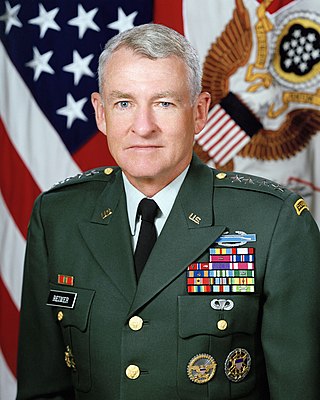
Dennis Joe Reimer is a retired general of the United States Army, who served as the 33rd Chief of Staff of the Army from June 20, 1995, to June 21, 1999. He is also a graduate of Ranger and Airborne school.

Robert Lewis Wetzel was a retired United States Army lieutenant general.
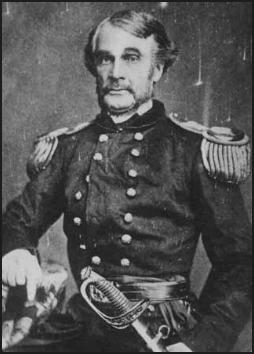
Edmund Brooke Alexander was an officer in the United States Army in the Mexican-American War through the American Civil War who rose to the rank of brevet Brigadier General in 1865.

Ann Elizabeth Dunwoody is a retired general of the United States Army. She was the first woman in United States military and uniformed service history to achieve a four-star officer rank, receiving her fourth star on November 14, 2008.

Major General William Weigel was a United States Army officer who, throughout his long military career, served in numerous conflicts and wars, most notably towards the end of World War I, commanding the 56th Brigade of the 28th Division before taking command of the 88th Division in the war's final weeks.
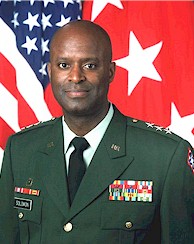
Billy King Solomon is a retired Quartermaster officer, U.S. Army Lieutenant General and former Commander of the Combined Arms Support Command, Fort Lee, Virginia.
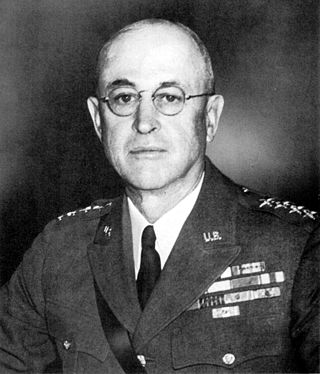
Malin Craig was a general in the United States Army who served as the 14th Chief of Staff of the United States Army from 1935 to 1939. He served in World War I and was recalled to active duty during World War II He played a large role in preparing the U.S. Army for World War II.
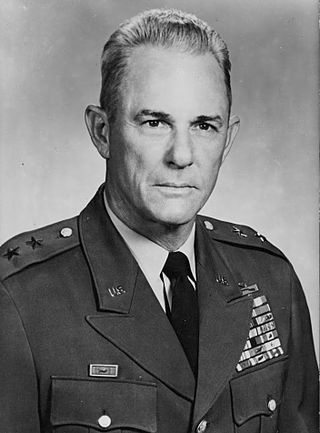
Glenn D. Walker was a lieutenant general in the United States Army. He was notable as commander of the 4th Infantry Division, First United States Army, I Corps, and adjutant general of the Mississippi National Guard.

Walter Lawrence Reed was a major general in the United States Army who served as Inspector General of the Army from 1 December 1935 to 23 December 1939. His father was Army Medical Corps officer Major Walter Reed, namesake of the Walter Reed Army Medical Center. He was born in Fort Apache, Arizona, and moved to Washington, D.C., where he spent most of his early life. Reed fought in the Spanish–American War and traveled across the country and to the Panama Canal Zone. He then began working as an inspector during World War I and became the inspector of Base Section Number 5 in February 1919 then worked in the American Expeditionary Forces office. For his work he earned the Distinguished Service Medal. Reed attended various military schools before returning to the Inspector General's department. In 1935 he became the inspector general of the United States Army. He retired in 1940, but was recalled to active duty during World War II, filling a role in the War Department until 1946. Reed died in the Walter Reed Army Medical Center in 1956.

Brigadier General Douglas M. McBride, Jr. is a retired general officer in the United States Army who served as the 55th Quartermaster General and Commandant of the Quartermaster School at Fort Lee, Virginia. McBride was appointed as the interim commander of the US Army Combined Arms Command / Sustainment Center of Excellence on 23 August 2018.
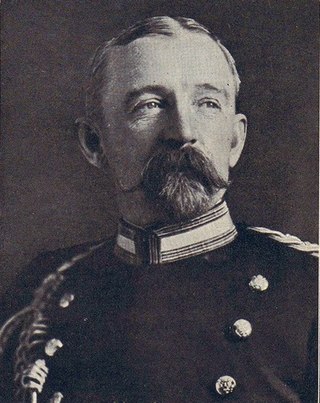
Julius A. Penn was a career officer in the United States Army. He attained the rank of brigadier general during World War I, and commanded 170th Infantry Brigade, 85th Division and 76th Infantry Brigade, 38th Division, in addition to serving as Chief of the Personnel Bureau for the American Expeditionary Forces.

John Fisher Preston Jr. was an American army officer who rose to the rank of Inspector General of the United States Army. His first conflict was the Spanish–American War serving in the 7th Infantry, and fighting in the Battle of San Juan Hill and Siege of Santiago. For his service in the war, Preston received the Silver Star. He then spent around a decade serving at various forts in the Philippines and across the United States. Preston was involved in the Quartermaster Corps and the Pay Department until the outbreak of World War I, serving a couple of years in France. He attended various Army schools until 1923, and had various leadership positions in the Army over the next fifteen years, culminating in appointment as Inspector General in 1931. After a four-year tenure and brief stationing at Fort Sam Houston, he retired from the army in 1936 and entered the banking industry in San Antonio. He died on July 1, 1960.
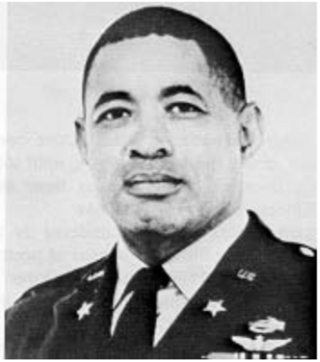
James F. Hamlet (1921-2001) was the second African American United States Army Major General and division commander. Hamlet served as commander of the 3rd Brigade, 1st Cavalry Division during the Vietnam War and later commanded the 4th Infantry Division.
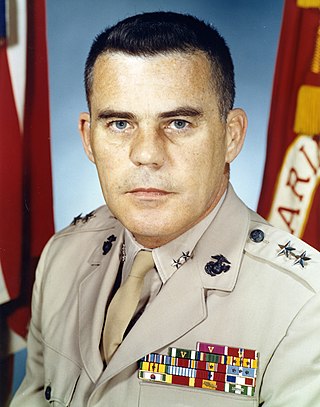
William Charles Chip was a decorated officer in the United States Marine Corps with the rank of major general. A veteran of three wars, Chip distinguished himself as battalion executive officer in Korea and later as commanding general, Task Force Hotel during Vietnam War.

John Austin Dubia was a lieutenant general in the United States Army who last served as Director of the Army Staff from 1995 to 1999. He was also executive vice president of AFCEA International until September 2013.

Charles G. Sawtelle was a career officer in the United States Army. A veteran of the American Indian Wars and American Civil War, he served from 1854 to 1897 and attained the rank of brigadier general while serving as Quartermaster General of the United States Army.




















